Filenews 21 July 2024 - by Yiannis Hadjigeorgiou
Itinerary and fieldwork of "Phileleftheros" in the village of Agia Irini in the Kyrenia district, about 10 kilometers north of the city of Morfou, where it is believed that it is still "buried", along with its great unexplored treasures (its impressive 2000 "clay soldiers", i.e. figurines, discovered in 1929, are believed to be only a sample), the ancient city of Cyprus, Kermeia.
It is a common belief in the global archaeological community that if it were not for an enlightened priest (the farmer-"priest" of the village of Agia Irini in the Kyrenia district – a small, almost unknown to most, village, between Kormakitis, Diorios, Morphou and Kalo Chorio Morfou – Prokopios) today Cyprus might not be in a prominent position among the most important archaeological excavations in the world ever made. with its famous 2000 or so "clay soldiers" (actually supplicants of an ancient shrine) – almost half a century before its famous "clay soldiers" were discovered in China, in the mausoleum of the first Chinese emperor Qin Shi Huang.
November 1929: Papa Prokopios, while cultivating his field with his plough, south of the village church (which, as evidenced by the photographs published today by "Phileleftheros" is completely abandoned, semi-ruined, and just before collapsing) stumbles upon a statue of a man's stature. The priest hid it in the barn of his house, where it was found by his daughter, Elegou (who "got angieloosian as soon as she saw it", according to oral testimonies) to whom he explained that it was probably an ancient find – from the very next day the news had spread in the village.
Despite the quarrels and disputes with some residents of the area, in order to dig on their own and sell whatever they find to looters, Papa Prokopios opposes, speaks of a "national duty, for our country" and rushes directly to Nicosia, to the Archaeological Museum, before he is caught by looting (it is even said that he and his son-in-law, Xenophon, but also with other fellow villagers, guarded the field in the following days, protecting the "treasure").

It was -coincidentally- the period when the archaeological Swedish Mission was in Cyprus, with (still young) Einar Gjerstad, Erik Sjoqvist and Alfred Westholm at the head. The Swedes, who immediately realized the importance of the statue discovered by the priest, immediately rushed to the village and its field – and this was to become the most important of the many (among others in Engomi, Kythrea, Idalion, Vouni, Marion, Soloi, etc.) discovery in Cyprus, a large part of which -1500 of these figurines-, is today in a prominent position (since this was pre-agreed with the English, What some archaeologists now call "legal theft") at Stockholm's Museum of Mediterranean Antiquities (Medelhavsmuseet), which was founded in 1954, while a smaller part – about 500 figurines – at the Nicosia Archaeological Museum.
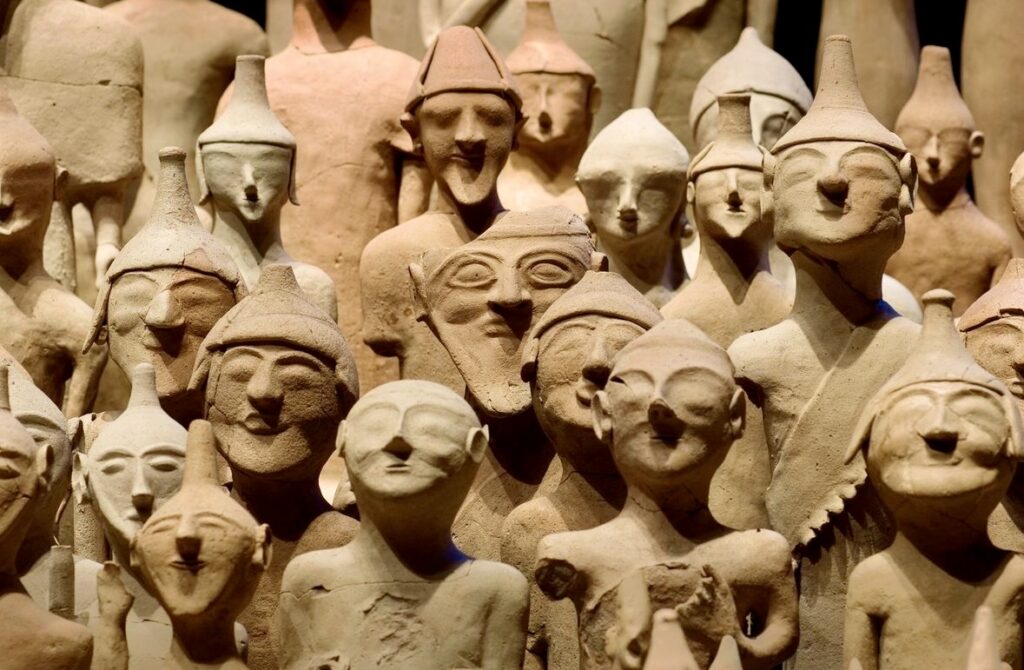
"In December 1929", as recorded by the Swedes, with their subsequent detailed researches, "the Mission finally brings to light something unique throughout the world: An unlooted open-air sanctuary, on the site of which were found, among others, 2000 (!) Approximately clay statues depicting mostly male figures and cattle animals, which were placed as votive offerings in a semicircle, around the altar of the sanctuary. All untouched! The male figures wore war attire but were not armed, and along with bull figurines and chariots referred to the worship of a male deity."
Einar Gjerstad wrote in his 1929 notes about the "magical excavation" and the imposing figure of Father Procopius: "The excavation began. Father Procopius went to the field to bless our work. He stretched out his hands, through the long sleeves of his cassock, as if in supplication Henry (ed. Erik Sjoqvist) counts and draws, takes notes and takes pictures. A multitude of statuettes, many war chariots pulled by four horses and manned by charioteers and warriors in full armour, some bronze statuettes and a large number of life-size statues. And all this, arranged in wide semicircles around a stone altar..."
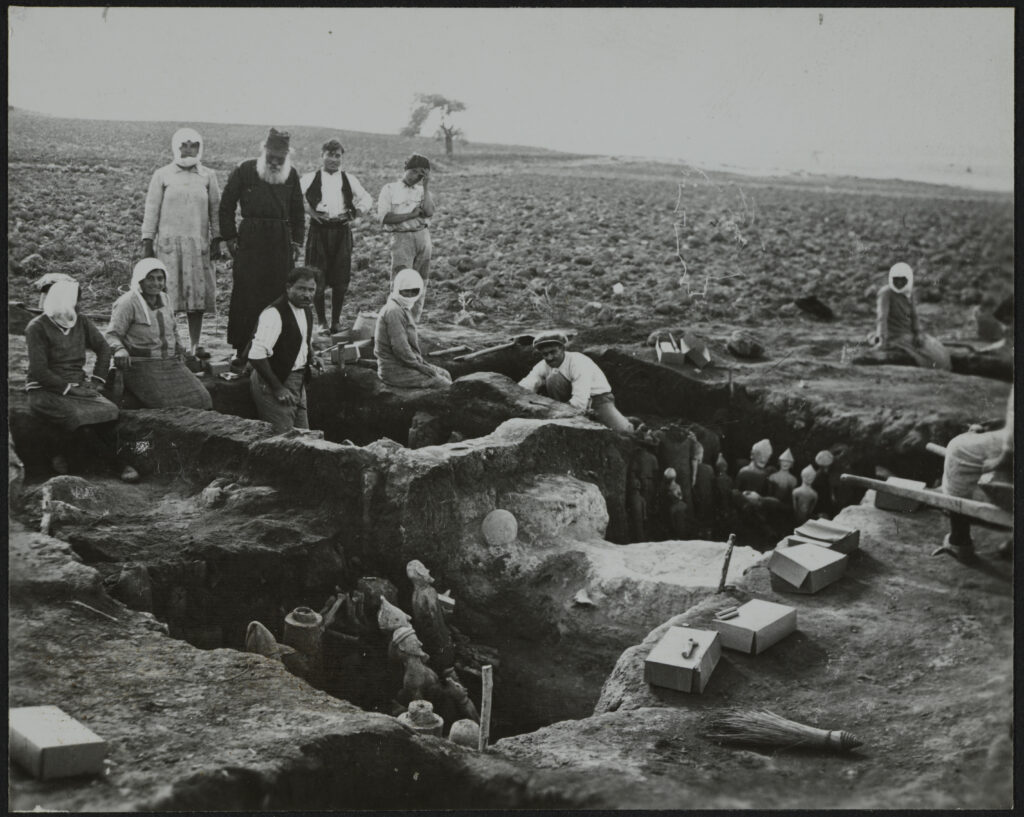
On the forthcoming questions "what date is the sanctuary?", "with which ancient city is it connected?" and "which deity -or deities- was worshipped in it?", the views of archaeologists and scholars initially differ, with the following version prevailing: The long history of the sanctuary is divided into three successive chronological phases, covering the periods from the last phase of the Bronze Age. 1200-1050 BC, 1050-625 BC and 625-500 BC The end of the seventh century BC, which coincides with the beginning of the third and final phase of the sanctuary, heralds the most important period of its history. At the end of the 6thcentury. B.C. the sanctuary is destroyed by a flood and abandoned, to be used again for a while in the1st century. B.C.
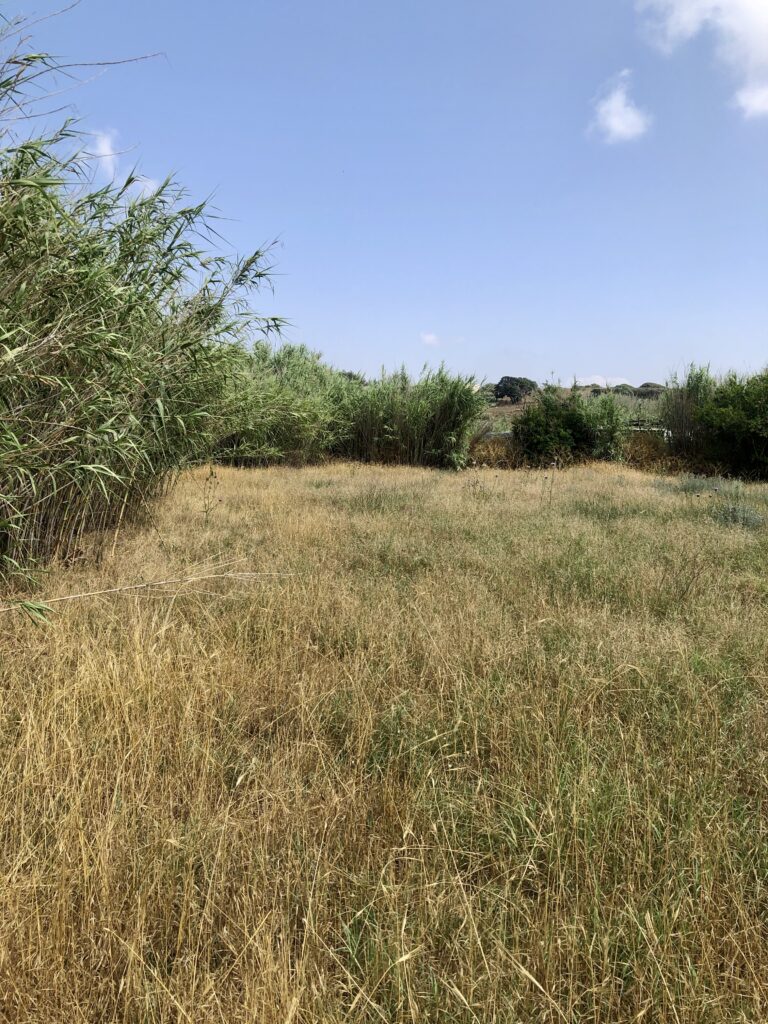
On the other hand, Dr. Dr. Theodoros Mavroyiannis, professor at the Department of History and Archaeology of the University of Cyprus, in an interview with "Phileleftheros", six years ago, will make a further important analysis of this important discovery: "The Swedish Mission classified these figurines in the Cyproarchaic era, which, however, has too long a duration (8th-6th c. BC). I dated them to the 7th century, the period 650-625 BC, based on the technique of koroplasty with which the large clay statues were made. I also relied on how these men are dressed, but also on the political history of the period 650-600 BC in the Eastern Mediterranean and the Assyrian antagonism with the Egyptian pharaoh Psammetichus I. Finally, I relied on the comparison with the parallel revival of Hellenism in the trade of Naukrateos, in the Nile Delta, around 600 BC, where Hellenion was founded. There is no doubt that the 2000 unarmed "soldiers" of Saint Irene have on their heads the Assyrian-style pile or cone, sometimes accompanied by an Egyptian-style girdle. However, these are "soldiers" who "spoke" Greek, as undeniably evidenced by the column of the Assyrian king Esarhaddon (663 BC) in which the kings of Cyprus are mentioned by their Greek names.
The "unknown" village of Agia Irini
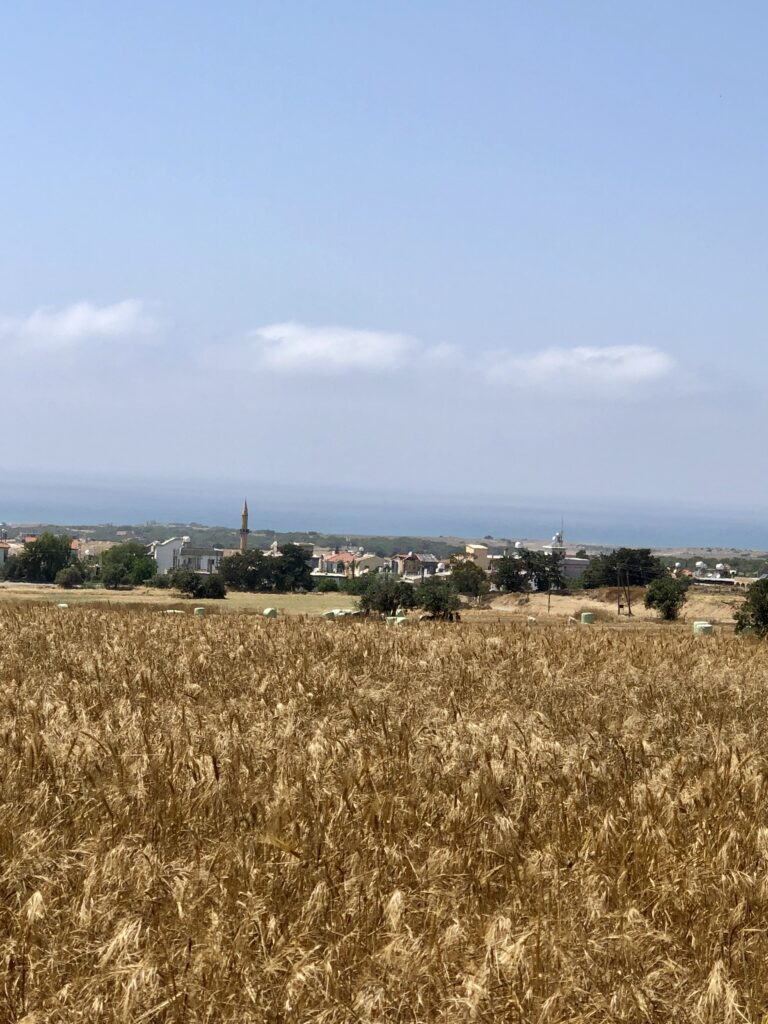
Like most residents of our country, I was not aware of the existence of this "magical" in natural beauty of a small mixed (until 1974) village of Cyprus, surrounded by three -different vegetation- forests, extending to the bay of Morphou and its wild sea, until one of my visits to Morphou and proceeding on the road leading to Diorios in order to, Via Myrtos, and taking a circular Sunday walk between the militarized villages of Asomato, Kontemeno, Skylloura and Agios Vasilios, I would return to Nicosia – just before reaching the turn leading to Kormakitis, the sign to "Akdeniz" (as Agia Irini is called today), made me stop. And I turned left.
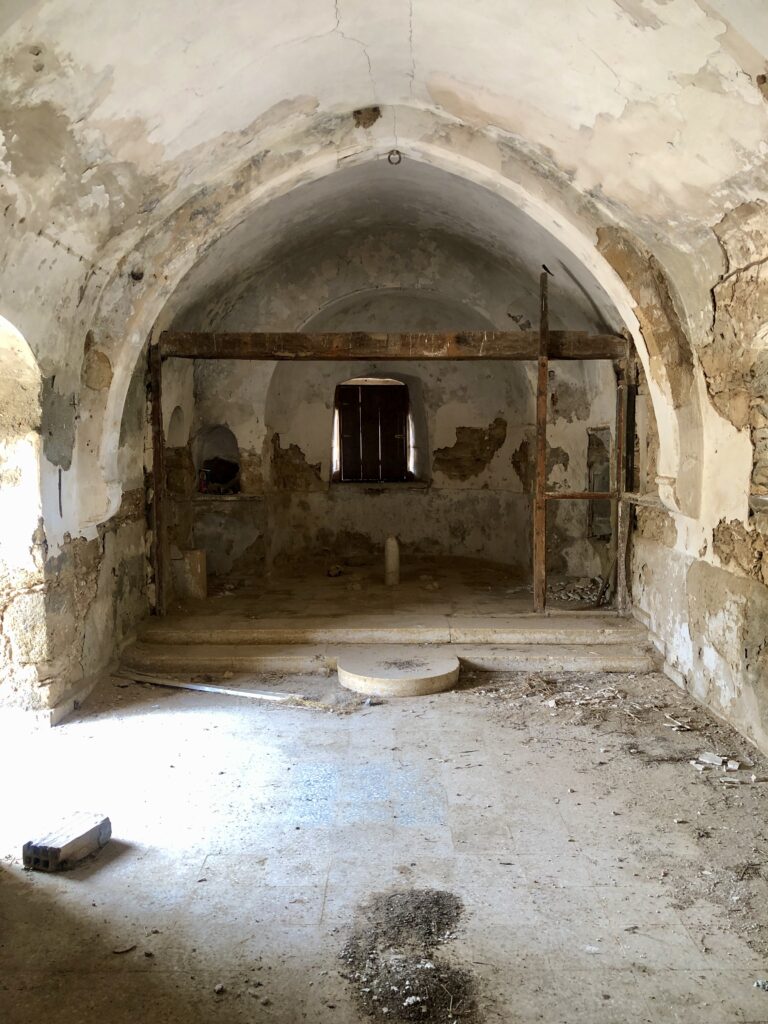
The "revelations" were successive, proceeding through a virgin grove forest on one side of the small road and the dense forest of Kormakitis on the other, with pines, cypresses, a few eucalyptus trees, dense bushes, rare flora and fauna of the place that seems to protect itself well. Until I reached the entrance of the village and saw the (badly printed) imitations of the "clay army" created (probably recently) by the Turks, who "welcome" you to their place of "birth".
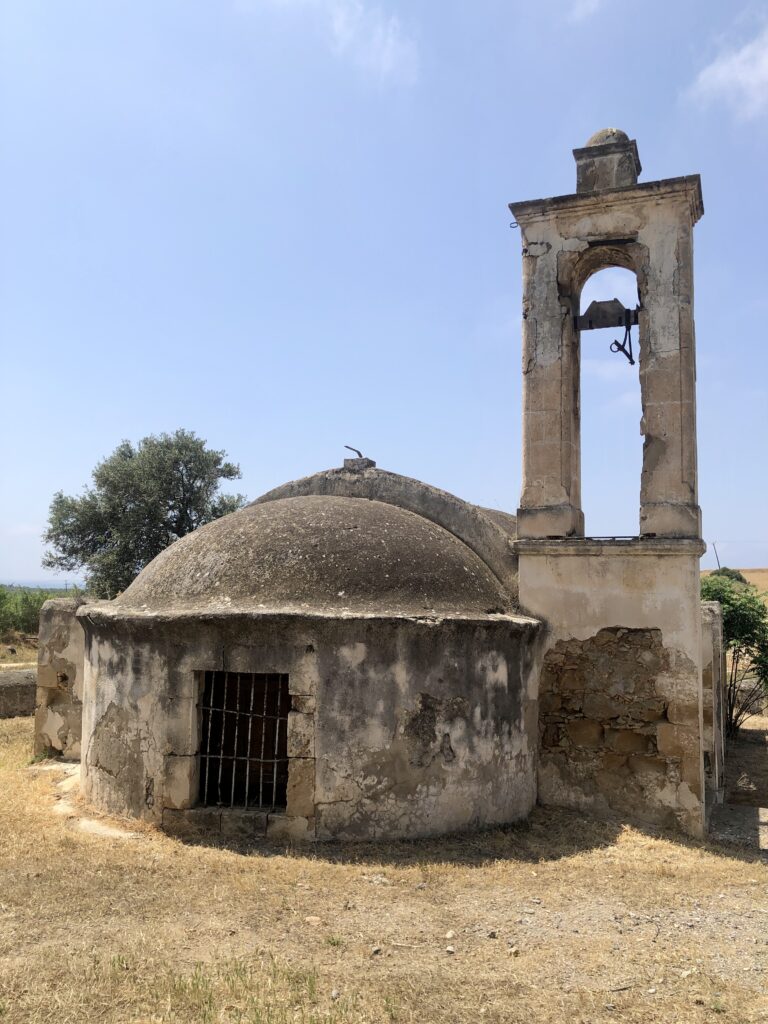
Among the houses of Avramis Xystos, Kapnoullas, Tziyrkallis, and Kelepesis (as Dr. Charalambos Anastasiades, originally from Agia Irini, with whom I would talk on the phone after my third visit to his village, would enlighten me in the course of my research, through his excellent study), I would learn, for the first time, The great "secrets" of this unique Earth – known to some scientists, but not to the "big" public, even before 1974.
I would learn, for example, about Pachyammos, Palaiokastron, the Stoman of Aloupos, the Primary School (which today is inhabited as a house) next to the small church of the few (about 100) Greek Cypriot residents of this mixed village, the aqueduct, the characteristic fountain and the cistern that no longer exist. And then, driving south of the church, through a dirt road, and with a route of about two kilometers, very close to the looted royal tombs of Agia Irini, the most magical, as an image, "hides" our place (perhaps more, due to its extent, than Pachyammos of Karpasia): The wide, sandy, "virgin" beach – beautiful and unbuilt for many kilometers, As far as your eyes go, and maintaining the "myth" (or its self-protection in "development") about "dangerous currents" in which you should not be dragged. But is it only what Saint Irene seems?

An ancient, hidden city, under sand and soil?
In a paper by Hierocles, in his "Synecdemus", published by Dr. Charalambos Anastasiades in his study (which is no longer available in bookstores), is mentioned as one of the 13 largest cities of Cyprus (among which, Tamassos, Amathus, Soli, Paphos, Kition, etc.) and the city of Kirvoia. It is the same city that Constantine Porphyrogenitus calls Kermia (distinguishing, however, it from Kermia in Nicosia, but also from the village of Thermia in the Kyrenia district, as a separate kingdom from the nearby kingdom of Solon), while later scholars such as George Frangoudis, Louis Ross in 1845, Athanasios Sakellarios and Ieronymos Peristianis refer to it as Kermian or Kerveian, while Nearchos Clerides and Marios Stylianou now call it Kermeia.
However, everyone agrees that this ancient city, the only one that has not yet been discovered in Cyprus, and for which its location is not yet precise, is definitely located around the village of Agia Irini (this is where the latest archaeological work carried out in the village, in the areas of Palaiokastro and Haraga, by the Italian Archaeological Mission of the Institute of Mycenaean and Aegean Oriental Studies, converges, in the period 1970-1972 – in fact, no archaeological excavations have excavated in Agia Irini in the last 55 years or so).
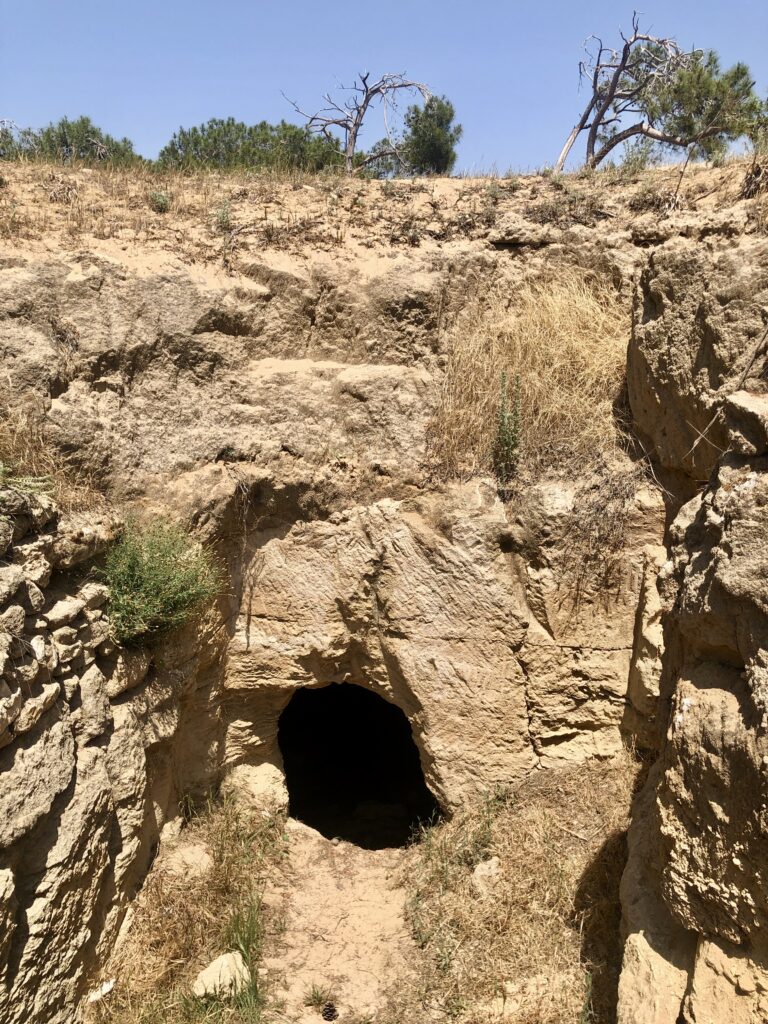
At a conference organized a few years ago on the importance of the archaeological site of Agia Irini, on the initiative of the long-time president of the village, Dimos Yiangos, the anxiety for the future of the "treasure" hidden in Agia Irini was expressed in various ways: There are looters in the area who proceed alone (and silently) to excavations -under the tolerance of some-, selling priceless Cypriot treasures of Cyprus abroad; Was it only an economic issue not to repeat archaeological excavations in the area, for almost half a century (perhaps through European funds), until an ancient city came to light, which, everyone speculates, is buried underground and is waiting for its moment to be revealed? What was the position of ancient Kermeia (or Kerboea or Kyrboea) among the other city-states of Cyprus? And if it was the only one in a large area of northwestern Cyprus, in the center of Morphou Bay, could it be that the "treasures" hidden in this city are of inestimable archaeological value, which will provide answers to many other scientific questions?
During my visits to Agia Irini over the last five months, however, I noticed two large buildings being built on the side where the looted royal tombs are, near the dirt road leading to the sea, without knowing what they are (probably hotels, or hospitality venues). Also, Katerina Attalidou writes in her book "In the same place" that she has learned that "foreigners buy the land by the acre in Agia Irini, without even seeing it!".
Why? And if the information is correct, what is imminent to happen in this "virgin" (still!) soil, above -perhaps- some more ancient tombs, some ancient theater or gymnasium covered by soil, elaborate mosaics or rare basilicas that stubbornly "protect" (for how much longer?) the dunes of this unique beauty and value?
Elefthera, 21.7.2024
